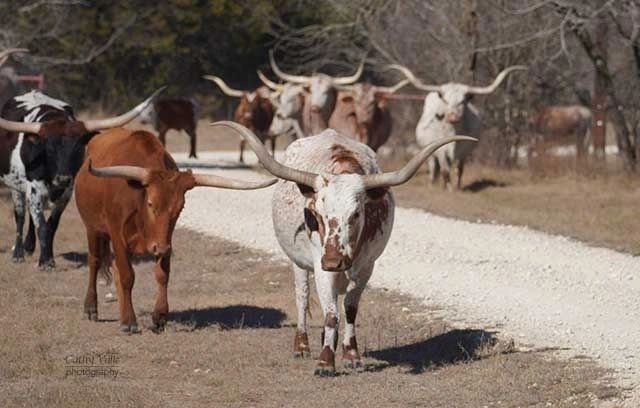Can you imagine Texas history without Texas longhorn cattle???
There is no doubt that Texas longhorn cattle have assumed a quintessential roll in Texas history and remain a privileged and endearing icon for the State.
So in order to acknowledge such a tremendous contribution the Texas longhorn cattle breed exemplifies, we decided to document some noteworthy events, important names and perhaps, some changes in the Texas longhorn cattle breed decade by decade until today.
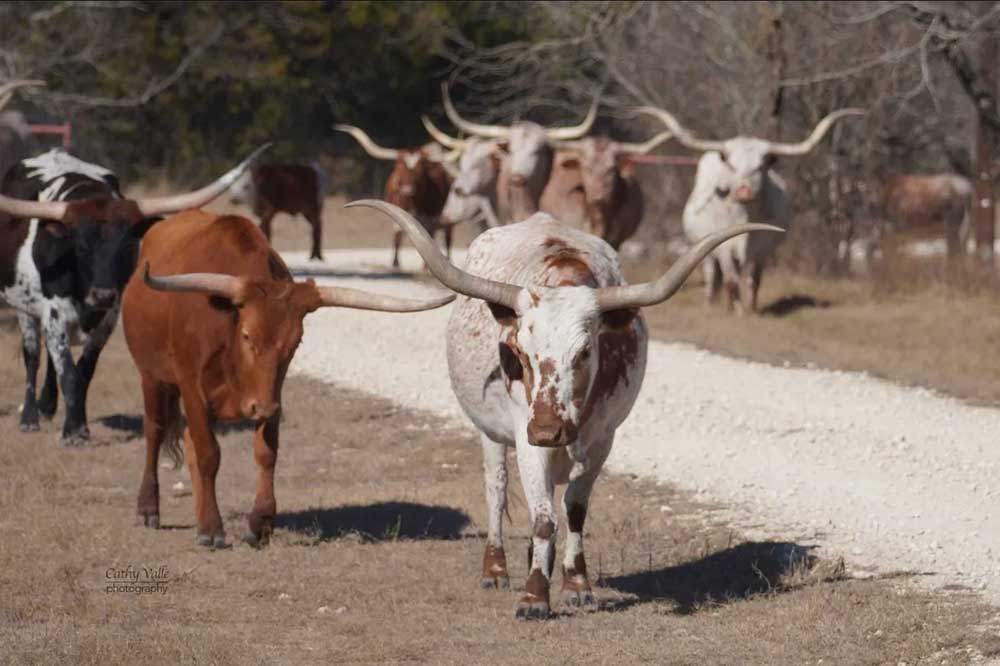
- There is no one Texas longhorn that is the same. Yet Texas longhorn cattle have changed over 100 years. One noticeable change that sticks out, so to speak, relates to their horns. CLICK on this image for more details on the Texas longhorn horns – EVOLUTION | REVOLUTION
1920’s
In the 1920’s the Texas longhorn breed was facing extinction- hard to believe considering that in the prior century these phenomenal animals wandered in the Texas wilds in their millions. For more on Texas longhorn cattle history – 16 Interesting facts of the Texas Longhorn Cattle Breed
A number of reasons caused these wild Texas longhorn cattle herds to dwindle in number. The invention of barbed wire and the tick influenced this decline and both are detailed in our post “Immune to a disease which played a role in depleting a breed, how?”
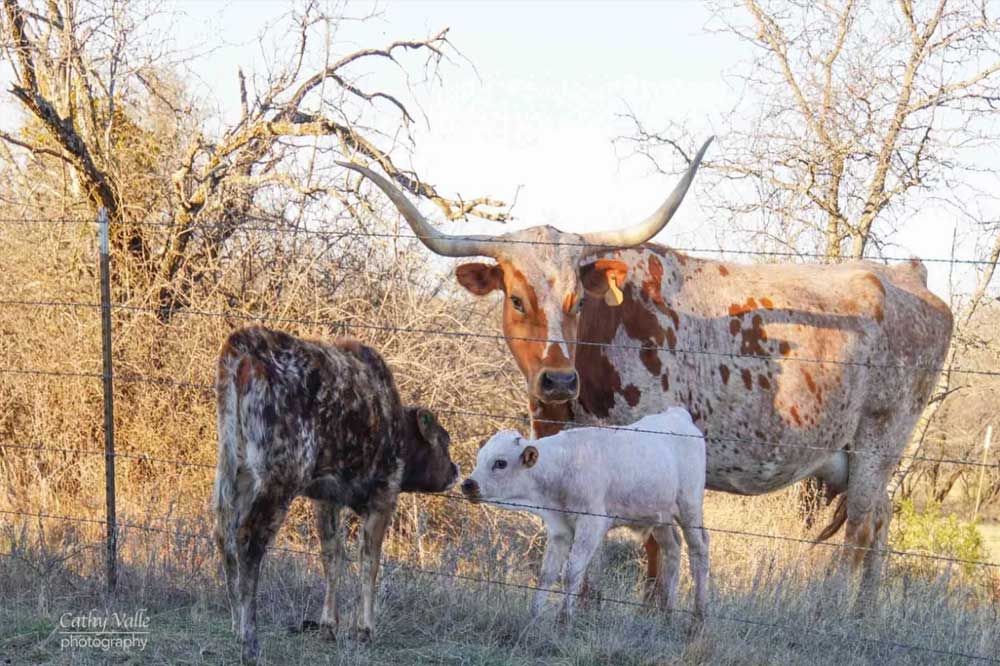
- The first patent in the United States for BARBED WIRE was issued in 1867 to Lucien B. Smith. Following, fencing lead to a reduction of Texas longhorn cattle in the wilds. To find out more read our blog IMMUNE TO DISEASE WHICH PLAYED A ROLE IN DEPLETING A BREED, HOW?
This shocking threat of the disappearance of a ‘ICONIC TEXAS SYMBOL’ compelled the Government to take action.
Will C. Barnes, John H. Hatton and William Earl Drummond are three noteworthy names. They all had the amazing foresight to preserve the Texas longhorn cattle breed. Additionally, all three worked for the Forest Services. Nonetheless, many believe that Barnes took the lead to establish this herd. He succeeded in raising funds through his networking with Sen. John B. Kendrick, a former Texas trail boss who managed to persuade Congress to fund a government herd.
1927 – An awesome accomplishment in Texas Longhorn cattle history
The Wichita Mountains Wildlife Refuge Texas Longhorn Cattle Herd
In 1927 Congress set aside $3000. Following, they assigned Barnes and his fellow service ranger, Hatton to select a herd of the purest of Texas longhorn cattle. In essence, the goal was to preserve the Texas longhorn breed. All these longhorns came from Texas.
Barnes and Hatton inspected hundreds of cattle with longhorn characteristics throughout Texas. An article featured in the Texas Longhorn Trails on the 7 Families suggests that Barnes and Hatton ultimately selected 19 cows and 1 bull. According to The Cattlemen ( ‘Longhorn Type Perpetuated,’ The Cattleman 14 Sept 1947) the government selected 30 head. Unfortunately, within a few months one cow and one bull had died, one bull was never used for breeding as he had too much Brahman blood in him and within the first 3 years, 7 additional cows died.
- Over the first few years the focus of the Wildlife Refuge was to keep the longhorn herd pure. Subsequently, many more potential bulls and their progeny were eliminated from the program.
- Although records are no longer kept today, the Wildlife Refuge maintained accurate records of the WR herd from the beginning.
Describing their horns- ‘No two sets of horns are alike……some have horns standing up in rolling spirals and others wide needle- pointed horns point straight up.’
(Worcester, Don, The Texas Longhorn , Texas A&M University Press (1987),pg. 78.)
Interestingly, none of the cattle selected for the WR Herd came from the ranches of families including *Butler, *Yates, *Marks or *Wright even though these longhorns came from the same areas within Texas where these herds were located. (*) see references below
1930’s
J. Frank Dobie was one in a group of Texans who felt that Texas should also set aside land to perpetuate the Texas longhorn cattle breed.
An commendabull gesture: 1931 – Sid Richardson, a Fort Worth oilman agreed to subsidize a Texas longhorn herd for the State of Texas
on condition that J. Frank Dobie be in charge of locating a herd which he did with the help of his friend Graves Peeler.
Graves Peeler was the foreman of Nash Ranch at the time. As he collected longhorns for Dobie, he also collected a herd for Nash Ranch and for himself.

- Chisholm Trail Mural at Sundance Square in Fort Worth illustrates how Texas longhorn cattle looked on the cattle trails. Their curly horns and bony frames similar to how they looked in the 1920’s. For other fun Texas Longhorn Cattle sites to visit in Texas
For more ideas on murals and fun sites to visit and additional outdoor activities with Texas longhorn cattle in Texas
19 Fun ideas with Texas Longhorn cattle: during COVID and beyond
1940’s
By this time the state herds were thriving enough to stock a small breeding herd for Fort Niobrara Wildlife Preserve in Nebraska and also to auction breeding stock to private ranchers and longtime longhorn enth’ooo’siasts.
From 1943 Texas longhorn lovers and cattlemen would assemble once a year at the longhorn surplus sale at Wichita Mountains Wildlife Refuge.
Names familiar to the Texas longhorn industry emerged as serious Texas Longhorn breeders, for example:- Harry Pon, *Jack Phillips, *Graves Peeler, Charlie Schreiner III, J.T. Shahan, etc.
1948: – Fort Griffin State Historic Site – the official home of the State herd of Texas longhorn cattle
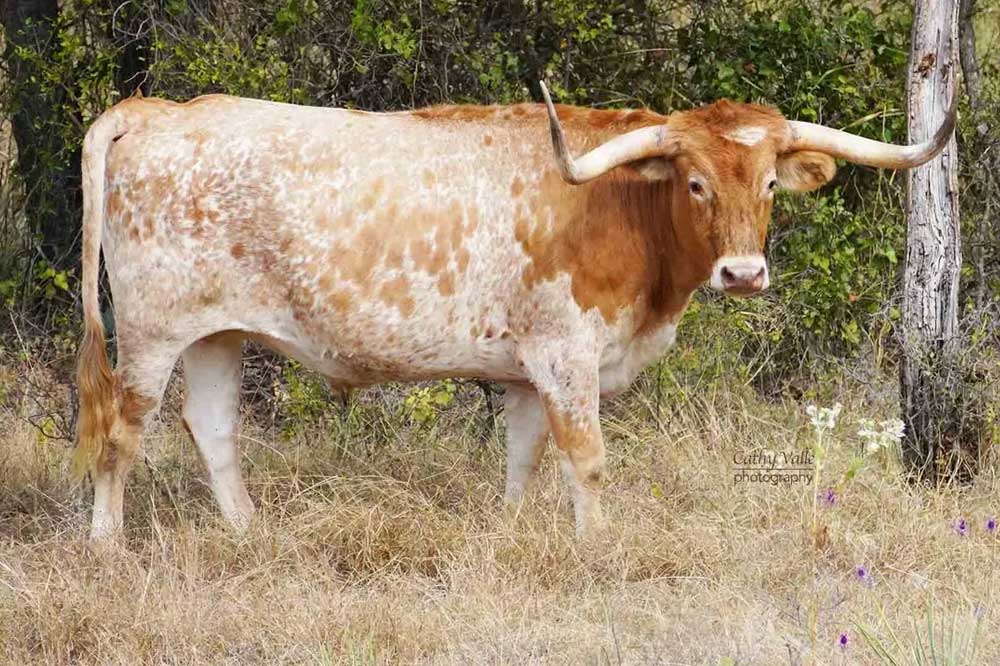
- Longhorn cow at Fort Griffin Historic Site. For more on the longhorn herd at Fort Griffin State Historic Site
1950’s
At this time the WR longhorn herd consisted of 17 cows and 22 bulls, 9 of which were obtained through trade with *Cap Yates.
1960’s
A cr’oo’cial date in the Texas longhorn cattle history and the industry: 1964 – the formation of theTexas Longhorn Breeders Association of America (TLBAA) .
The TLBAA established their office in Texas and held the first meeting.
- Charlie Schreiner III was elected the 1st president of the TLBAA with 26 charter members in all. Although he had not initiated the idea of an association (Harry Pon did), he started the ball rolling by filing the paperwork and gathering a group of relevant participants.
- The members set breed standards as well as a registry
- Claude Schreiner was hired as an inspector to assess the eligibility of cattle
- Schreiner’s cattle were the first to be registered. 20% of Schreiner’s herd was not accepted.
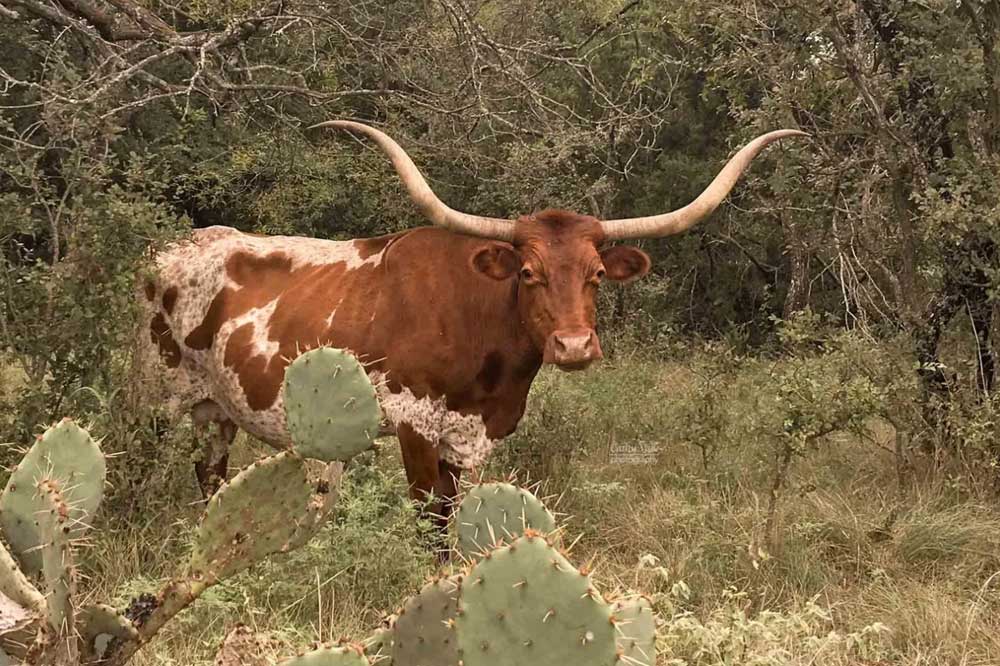
- Calamity Louise lived for over 20 years, the majority of which were spent at GVR longhorns. In fact, her heifer, Lady Godiva is in the following photo. Aunty Louise, as we affectionately called her had strong ties to Schreiner’s III herd and YO Ranch. Her sire was YO Houston Class. She had YO Houston Classic, YO Linda and YO Calamity Jane in her lineage. Above all, she was an excellent mother as are most Texas longhorn cattle. A strong maternal instinct is one characteristic of longhorns that stands out. Click on the photo to find out another reason behind the popularity of Texas longhorn cattle.
1970’s
On the 10th anniversary of the TLBAA, the organization had grown to 350 members and 7000 Texas longhorn cattle
As of June 30, 1975, the only progeny eligible for registration were those of registered Texas Longhorns.
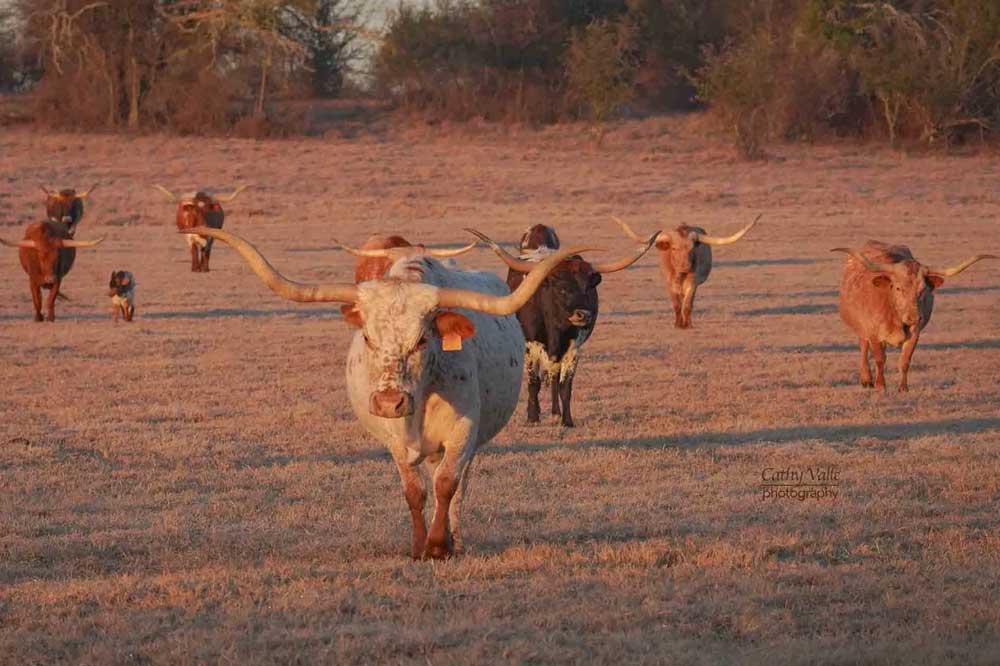
- Texas longhorn cattle at GVR longhorns in Dublin Texas are all registered with the TLBAA
TO OUR SALEBARN AT GVR LONGHORNS
1980’s
2500 members joined the TLBAA by the early eighties . Moreover, registration of longhorns exceeded 45 000.
- 1981 – TLBAA purchased a site for the office in the Fort Worth Stockyards
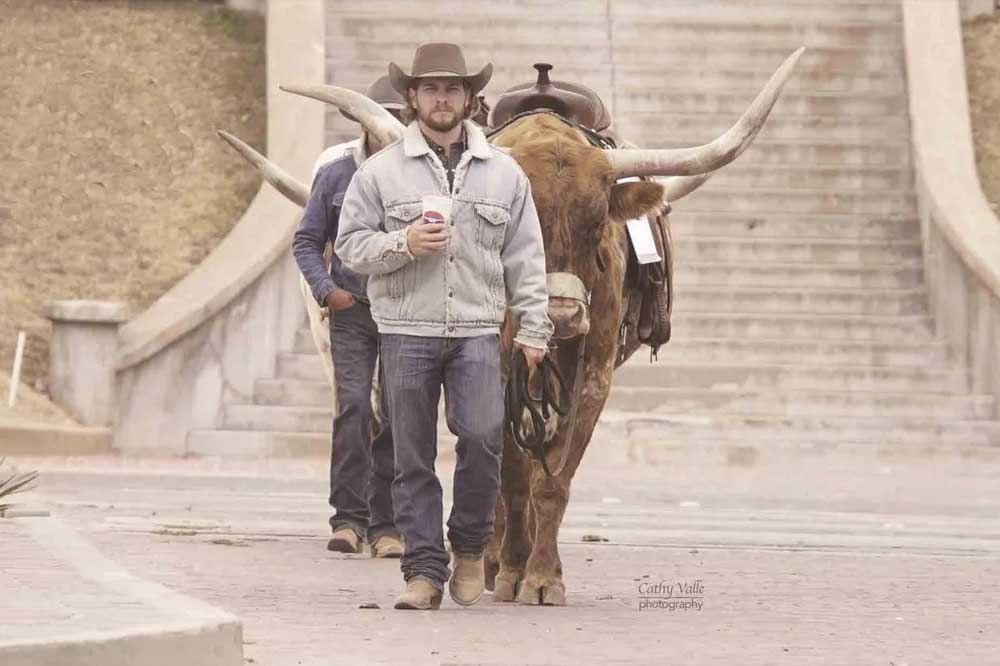
- ” I’ve heard people say that the cattle industry made Fort Worth, but I am inclined to believe that Fort Worth had a lot to do with making a cattle industry in Texas.” J.S. Bridwell ( quote from the Stockyards Museum). JW, Stockyard wrangler leads Patron a sweet riding longhorn steer into an always bustling Main Street of Stockyard Station in Fort Worth.
- 1987 – The Texas World Show Circuit began
- 1988 – The TLBAA held the 1st Texas Longhorn Exposition in Fort Worth
- The TLBAA established the Breed Evaluation System & The Breed Advisory Council
Similarly, in 1989 a group of longhorn breeders formed a separate group called the International Texas Longhorn Association (ITLA) and held their first meeting.
High purchase prices pointed to a growing interest in Texas longhorn cattle, not only for their innate hardiness to endure the elements but as commercial beef as well.
The sale records of the WR herd totaled $240 000 in 1981 for 99 longhorns (15 cows & bulls, 14 steers and 70 calves). Whereas in 1964, the total was $16 890 for 21 cows,14 steers and 40 calves.
Significantly, Rural Delivery born in May 1980 sold for just over $100 000. (His sire Classic had already been syndicated for $1M)
1982: – Texas Ranger J.P. frozen semen collections were syndicated by the Texas Ranger Memorial Semen Syndicate for $1.5M at $15000 a share.
Texas Ranger J.P. was born in 1968 and his horns measured just under 50″ Consequently, his fame perpetuates as his genetics continue to show up in the pedigree of every Grand Champion longhorn bull to this day.
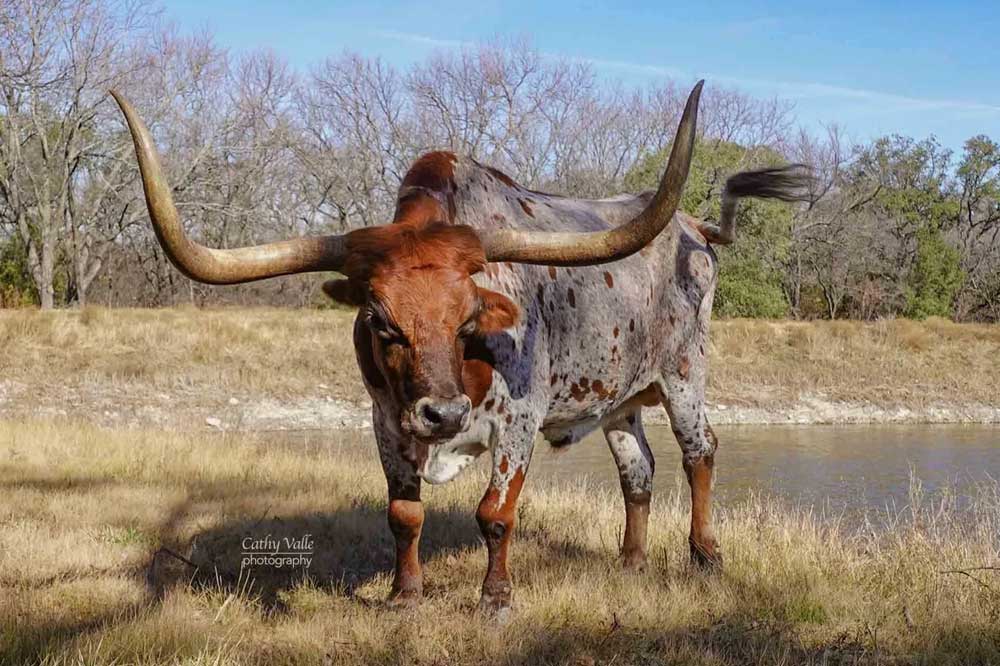
- Our big bodied Texas longhorn steer MOONSHINE, at GVR longhorns. As you can see, we did not raise him for beef but we did write a blog on the question ‘Can you eat the Texas Longhorn Cattle you raise?’
1990’s
1991 – Cattlemen’s Texas Longhorn Registry (CTLR). A small group of Texas Longhorn cattle breeders established this group. In essence, their motivation was focused on a belief that the Texas Longhorn breed was being “improved” to the point of extinction.
In the 1990’s a good Tip To Tip horn measurement was around 55″
2000
2005: – the CTLR formed the CTLConservancy Overall, they state their goal as “engaging in scientific research and education about old-time, original Texas Longhorn cattle”. Furthermore, and in contrast to the TLBAA, they state that “the original CTLR Texas Longhorn is now on the Livestock Conservancy’s List of 150 Critically Endangered Heritage Breeds.” www.ctlc.org
Like all commodities over the last twenty years, Texas longhorn prices have had their ups and downs, and just like a pend’oo’lum swings from one extreme to the other, so have prices. The trend for high prices at auction over the last two decades has favored the widest horns. Two of the highest prices paid for the widest TTT measurements were both in 2017.
2017 – 3S Danica the widest cow TTT sells at auction for $380 000
2017 – Cowboy Tuff Chex, the widest horned bull in history to that date, sells at auction for $165 000. Undoubtedly by the end of 2021 his horns had exceeded 105″.
2021 – Although there are many more auctions these days than in the past, according to TLBAA, total auction sales for 2021 were close to $4.5M.
To illustrate, the highest price paid(in 2021) was for 2JB Cocaine Lady who sold for $280 000. Even though at the time of sale she was ten years old, she had a TTT horn measurement close to 98″.
( wondering how much Texas longhorn cattle cost in general – READ HERE)
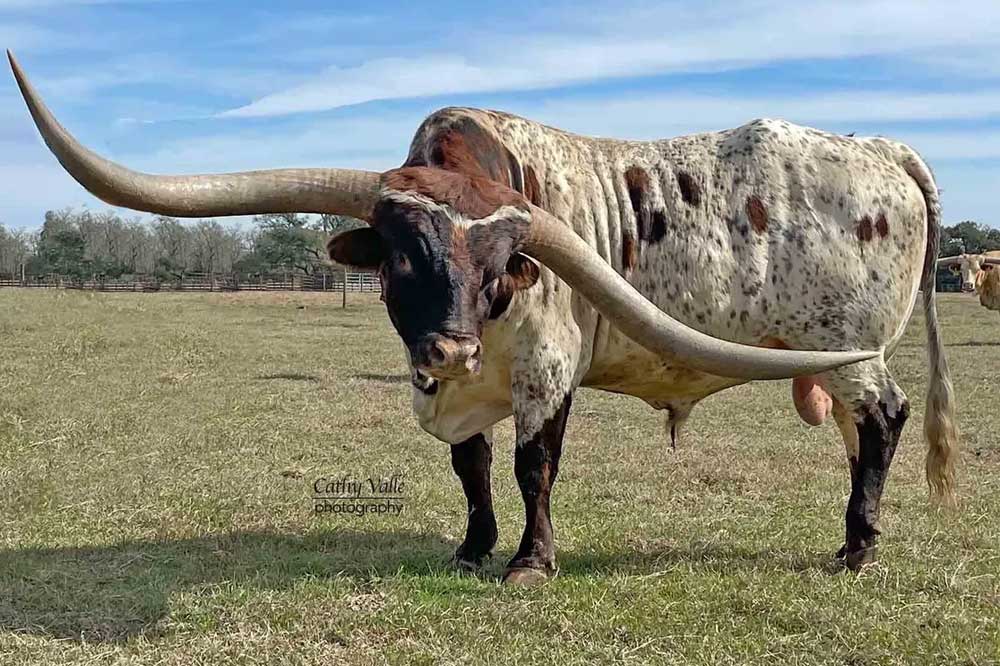
- Texas longhorn horns – evolution, revolution. For additional info on how longhorn horns have changed, click on this picture of Cowboy Tuff Chex. He is currently the widest horned bull in history. This photo was taken with permission from Bentwood Ranch.
MINDBLOWING!!! Currently the TLBAA has close to 4000 active members with total registry of just over 500 000 Texas Longhorns
For additional advantages of the Texas longhorn breed follow this LINK
To Concl’oo’d
To conclude, tracking Texas longhorn cattle history, researchers have traced the genetic pool of our modern day Texas longhorn cattle back to * 7 foundation families. The WR herd is one of those “families”. In addition, the other 6 are listed above with an asterisk (*) in front of their names. All 7 “families” represented longhorn herds with different characteristics depending on their personal preferences and specific climatic and environmental conditions. Subsequently, some characteristics were consistent but a few specifications differed from one herd to the other. All in all, whether or not the original families would have agreed on the perfect specification for a Texas longhorn today remains unanswered.
Presently, across the board, Texas longhorn cattle have changed dramatically over the last 100 years. In brief, body conformations are considerably different and horn structures and shape are wider and longer than ever before.
None-the-less, whether your interest is to maintain Texas longhorn cattle in their purest form, as was the initial intention of Texas longhorn enth’oo’siasts, to jump on the band wagon in a very competitive beef market, or to produce the longest horns, the Texas longhorn cattle industry remains awe-inspiring, as well as unquestionably attractive.
Interesting reads:-
15 Awesome Reasons why Ranchers raise Texas Longhorn Cattle
16 Tips for Texas Longhorn Cattle Ranchers in Texas
How much do Texas longhorn Cattle cost?
14 Gestures of Love and Affections the Texas Longhorn Way
Advantages of Texas longhorn cattle
References:-
Worcester, Don. The Texas Longhorn, Relic of the past asset for the future. College Station: Texas A&M University Press, 1987.
J. Frank Dobie, the Longhorns, University of Texas Press,1985
https://www.tshaonline.org/home
Disclaimer: All material noted above is based on our hands- on experience as ranchers, as well as our observations of our own cattle over the years. We have done and continue to do extensive research in order to maintain our herd‘s optimum health. However, all opinions and statements are guidelines only. We are not qualified statisticians/ veterinarians and urge you to consult a specialist with your concerns. Content and of this blog and all pictures belong to GVR Longhorns LLC. ©GVRlonghorns.com All rights reserved.
Share this post:

